Wagyu in Japan: Kobe, Matsusaka, and a Rare Alternative
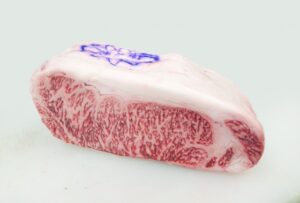
Introduction – Why the “Wagyu vs Kobe vs Matsusaka” Debate Matters
When travelers think of Japanese beef, they often imagine one thing: Wagyu—luxurious, marbled, melt-in-your-mouth. But “Wagyu” is not a brand. It’s a broad category that includes several breeds, regions, and quality levels.
This guide will help you:
- Understand the real difference between Wagyu, Kobe, and Matsusaka
- Discover how each type tastes, feels, and is served
- Learn why some travelers prefer Akaushi, a leaner and rarer breed of Wagyu
- Find the best places to try each in Tokyo—whether you’re a first-timer or a seasoned beef lover
Looking for a straightforward answer to “Which Wagyu should I try in Japan?” You’re in the right place.
What Is Wagyu? (And Why It’s Confusing)
“Wagyu” simply means “Japanese cow,” but the reality is far more nuanced. Most media focus only on “A5 Wagyu”—a grade, not a breed.
The Four Major Wagyu Breeds in Japan
- Japanese Black (Kuroge) – Most common; intense marbling.
- Japanese Brown (Akaushi) – Leaner, rich umami, less greasy.
- Japanese Shorthorn (Tankaku) – Very rare; deep savory flavor.
- Japanese Polled – Nearly extinct.
Wagyu is a category—not a guarantee of quality. What matters is breed, feed, and technique.

Looking for an unforgettable Wagyu experience in Tokyo—but not a heavy, fatty one? At QUNIOMI, we offer something rare: a quiet, bistro-style dinner in Ebisu centered around Kumamoto Akaushi, a lean and healthy type of Wagyu that represents just 1.3% of all Japanese Wagyu.
Kobe Beef – Strict Rules, Big Reputation

What Makes Kobe Beef “Kobe”?
- Must come from Tajima-gyu cattle raised in Hyōgo Prefecture
- Processed at certified slaughterhouses
- Grade A4/A5 with marbling score 6+
- Assigned an official Kobe Beef ID number
Is Kobe Beef Worth the Hype?
- Rich, buttery, instantly melts
- Very high in fat; can overwhelm some diners
- Expensive for small portions
Verdict: A bucket-list splurge—fantastic once, but not for every palate.
Matsusaka Beef – Japan’s Most Expensive Wagyu

What Sets It Apart
- Origin: Japanese Black cattle raised in Mie Prefecture
- Marbling: Ultra-fine, delicate fat webbing
- Reputation: Often deemed more luxurious than Kobe
Breed and Production
Traditionally, virgin female cattle were prized, but today high-quality castrated males may also be used. All undergo long feeding (up to 1 000 days), special care, and meticulous grading.
Dining Experience in Tokyo
Found only at elite teppanyaki counters or Wagyu kaiseki:
- Expect ¥25 000–¥50 000+ per person
- Seats book out months ahead
Wagyu vs Kobe vs Matsusaka – Head-to-Head
Side-by-Side Comparison Table
| Feature | General Wagyu | Kobe Beef | Matsusaka Beef |
|---|---|---|---|
| Breed | Mixed (mostly Kuroge) | Tajima-gyu | Japanese Black |
| Region | Nation-wide | Hyōgo Pref. | Mie Pref. |
| Marbling | A3–A5 (varies) | A4/A5, BMS 6+ | Ultra-fine A5 |
| Typical Flavor | Depends on cut & breed | Buttery, melts fast | Soft, luxuriant richness |
| Tokyo Price / Person | ¥10k–25k | ¥20k–40k+ | ¥25k–50k+ |
| Best For | First Wagyu experience | Bucket-list diners | Hard-core gourmets |
Flavor, Texture, Price & Booking Difficulty
Kobe is easier to find than Matsusaka, but certified seats vanish months ahead. Matsusaka commands the highest price and smallest supply. Regular Wagyu cuts cost less but vary widely—research matters.
Red Wagyu (Japanese Brown): Akaushi Explained
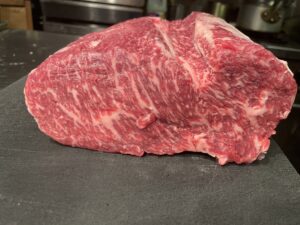
Akaushi cattle originate in Kumamoto and make up only 1.3% of all Wagyu in Japan.
Instead of heavy marbling, you get a firmer bite, deep umami, and a clean finish that pairs well with wine or sake.
How does Akaushi compare to Kobe or Matsusaka?
Think of it as aroma and depth instead of sheer richness.
Where Kobe and Matsusaka impress with marbling, Akaushi surprises with a long, clean finish—like moving from a sweet dessert wine to a complex Burgundy.
Why Some Travelers Prefer Leaner Beef
- Easier to eat: less oily, no post-meal fatigue
- Aroma-first: grilled to coax fragrance, not just fat melt
- Pairs with broader drinks: Burgundy reds, Crisp saké, even craft beer
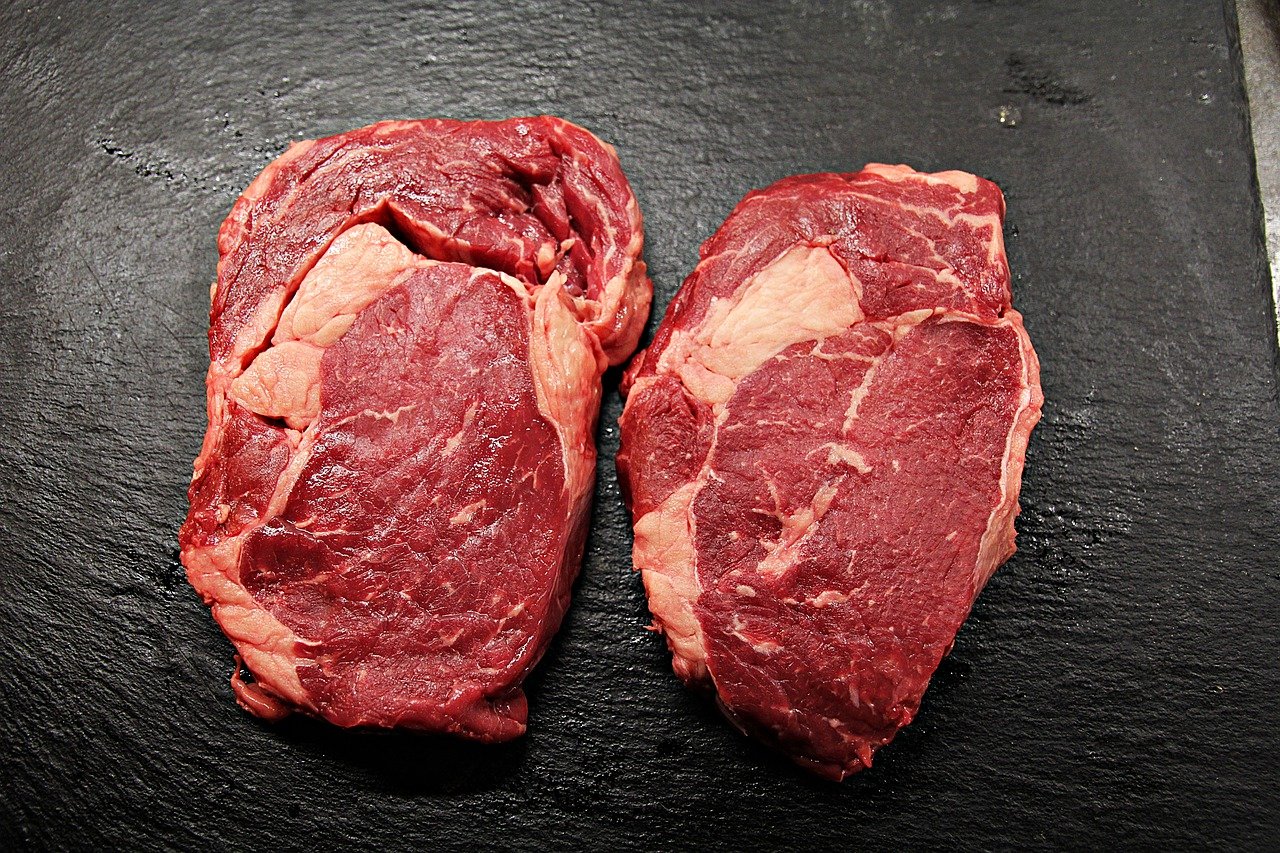 What Is Lean Wagyu? Where to Eat in Tokyo
What Is Lean Wagyu? Where to Eat in TokyoLooking for Japanese beef that’s flavorful, satisfying, and easier on the body? This article explains what makes Lean Wagyu—especially Akaushi (Japanese Brown)
Where to Try These in Tokyo – Curated Recommendations
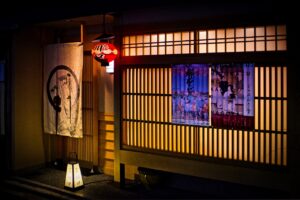
If You Want the Classic A5 Experience
A handful of certified counters in Ginza and Omotesando serve official Kobe or Matsusaka courses.
Expect live teppanyaki or premium yakiniku, with prices from ¥25,000 and up.
Reservations often open months ahead and may require a concierge.
If You Want a Different Kind of Luxury: QUNIOMI in Ebisu
For diners who have “graduated” from heavy A5, QUNIOMI offers Tokyo’s only full tasting menu built around pure Akaushi—the rare red Wagyu that makes up just 1.3 % of Japan’s beef.
French technique, hand-cut starters, and a calm, limited-seat room create a flavor-first experience you won’t find in any Kobe or Matsusaka venue.
Conclusion – The Right Wagyu for the Right Diner
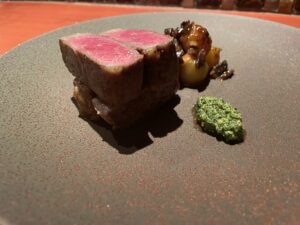
First Time? Go Classic
If this is your first Wagyu adventure, start with Kobe or another well-known A5 cut to appreciate Japan’s legendary butter-soft style.
Second Visit? Try the Other Side of Wagyu
Once you know that flavor, leaner breeds like Akaushi reveal Wagyu’s deeper spectrum—aroma, balance, and lingering umami.
Ready to taste the rare side of Wagyu?